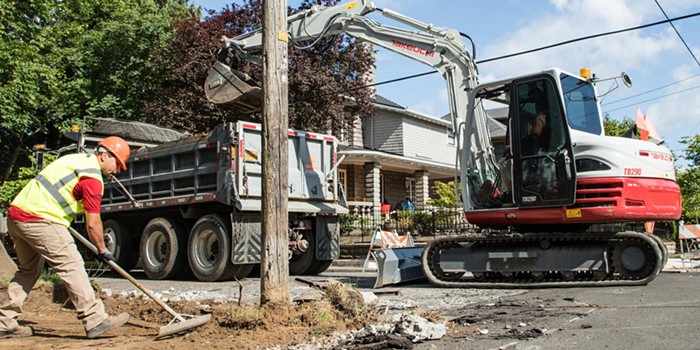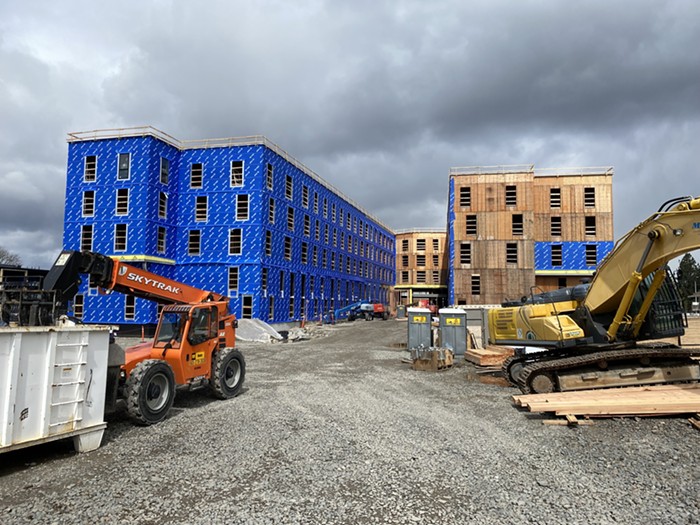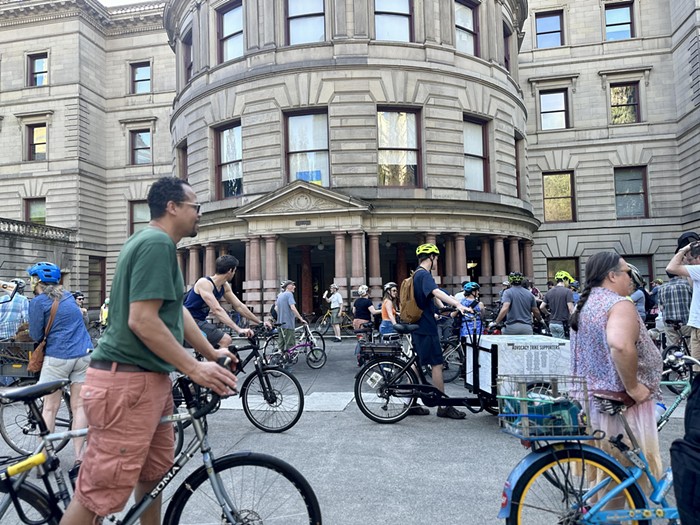SUNDAY, JUNE 8, marked a peculiar and largely overlooked milestone for Portland's Old Town.
Precisely three months after a homeless man was stabbed on a sidewalk beneath the Burnside Bridge, that crime scene—a problematic springtime campsite but also the only public walkway directly linking SW Naito with the Skidmore Fountain MAX station—was still walled off by wooden barricades and sagging police tape.
And that bureaucratic limbo shows no sign of lifting anytime soon, thanks to some mild political wrangling.
Though no one's keen to see overnight violence and drug use return to the belly of the Burnside, the one proposal that would permanently bar camping from the sidewalk—closing it at night, calling it a "high-traffic" area during the day—remains in a holding pattern. It appears to have been overtaken by a much larger discussion on homelessness in Portland City Hall, led in part by Commissioner Amanda Fritz.
If sidewalks are out, and if shelters are full, then where exactly should campers go?
"My suggestion was we have more conversations about that space and where people can be instead," says Fritz.
Fritz tells the Mercury she's begun talking with officials in the one major landowning city bureau under her control, Portland Parks and Recreation, about letting people stay for the night—provided they aren't causing trouble. And while cautioning that the talks are "very preliminary," she's also hoping to have the same chat with other big property-holding bureaus, like water and transportation.
"Are there situations where, if people were on city property, other than sidewalks, and if they weren't causing a problem," Fritz says, "that we would not be moving them on until morning?"
Camping enforcement in Portland has always been spotty. Officials insist the city, for years, has unofficially tolerated low-impact camping.
But after some newly muscular rhetoric from city hall about enforcement last summer, cops and park rangers and others have been very visibly sweeping larger campsites—often drawing public complaints from homelessness advocates about property confiscations.
The sidewalk beneath the Burnside Bridge was an example of both.
After those sweeps, campers began gathering in the winter, drawn by the promise of shelter from the elements. And with so few people actually using the sidewalk to cut to the MAX station overnight, cops and private security guards decided to tolerate what sprang into a makeshift campsite.
Slowly though, that began to change. Guards working for nearby Mercy Corps tell the Mercury that drug dealers and others showed up, too, crowding out some of the original campers.
Meanwhile, in late February, Right 2 Dream Too co-founder Ibrahim Mubarak was arrested on suspicion of disobeying an officer after advocates confronted police who'd showed up at the camp. Then came the stabbing on March 8—in which a bleeding 39-year-old man went stumbling into traffic on SW Naito.
It wasn't the first stabbing for the site, city officials say. But with all the notoriety, it was the last straw for cops, who shut it down.
"Most of the people who stayed the night are still around," says a private security guard working for Mercy Corps.
The guard—who asked to remain anonymous because he's not authorized to speak with reporters—says his own son was briefly among the group camping beneath the bridge. Some of those who left, he says, wound up a few blocks away, beneath the Steel Bridge.
"I got to know some of the people," the guard says. "Some people wanted to sleep, but it just got out of hand."
The police bureau, through a spokesman, says it realizes the crime tape "isn't a permanent solution, obviously." That's why they want to put up signs limiting who can use the sidewalk and when.
But since the tape went up, says Sergeant Pete Simpson, complaints have dried up. And so have arrests.
Simpson also says he's heard no beefs from pedestrians or people concerned about civil liberties.
Because of the tape, there's technically no legal way to get from Naito to the MAX station; to do that, you have to cut through private parking lots controlled by Mercy Corps and the University of Oregon. Guards theoretically could discriminate against people who "look homeless."
"As long as people are only walking through," the Mercy Corps guard insists, "that's all we care about."
Diane Dulken, a bureau of transportation spokeswoman, says police and transportation officials have briefed city hall on their sidewalk-closing proposal—even though they technically don't need council permission.
But "there is no firm timetable right now," Dulken says.
That's partly because of Fritz—who's been a champion for Right 2 Dream Too and emerged as one of the council's loudest advocates for people on the streets.
"There needs to be somewhere where people can go," she says, "when they're hungry, tired, and poor."



















